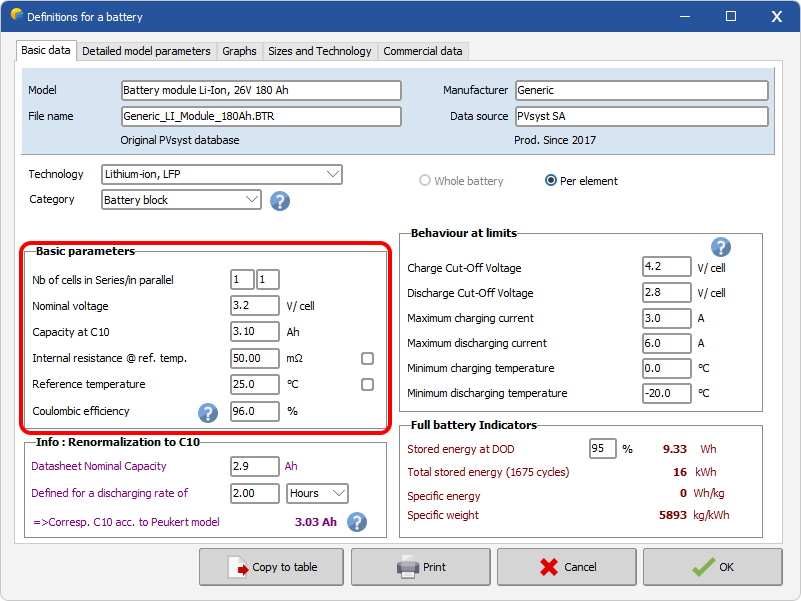|
<< Click to Display Table of Contents >> Lithium-ion : Basic Parameters |
  
|
|
<< Click to Display Table of Contents >> Lithium-ion : Basic Parameters |
  
|
Basic parameters :
| - | Number of elements in series / in paralell, often specified as "configuration XSYP" in datasheets. |
| - | Nominal voltage: around 3.4V for lithium batteries. Default values are set for each chemistry. |
| - | Capacity at C10, defined for 10 hours of discharge. It is possible to evaluate the Capacity at C10 from the nominal capacity specified on the Datasheet (see "for information"). Capacity behavior according to discharge rate and temperature will be defined in the next sheet. |
| - | Internal resistance is the resistance at reference temperature. When this information is not available, the checkbox provides a reasonable value which is calculated according to the specified Capacity at C10. Regarding batteries in the 'Original PVSyst database', the internal resistance is an output of the model. |
| - | Reference temperature is the reference temperature used by the model to set several corrections: the resistance correction as a function of temperature,and the capacity correction as a function of temperature (Detailed model parameter). |
| - | Coulombic efficiency (or faradic or current efficiency), is the discharge/charge cumulative currents balance, in %. We don't have much information about this parameter for the Li-Ion technology. |
| However the global efficiency in operation reported by some manufacturers is of the order of 92 to 95%. As a contrary to the Lead-acid batteries, the very low internal resistance only provides a very low contribution of the ohmic loss to the efficiency (less that 1% at "solar use" rates). Therefore we supposed this efficiency to be of the order of 96% for the Li-Ion batteries. |
 .
.